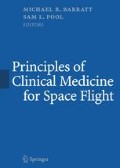The human immune system is composed of a complex set of specialized cells, chemicals, and organ systems that interact to protect the host from pathogenic challenge and aberrant tissue growth. The immune system consists of two major elements: innate immunity and acquired immunity. The innate or nonspecific immunity includes the phagocytes and natural killer cells as well as chemical factors (lysozyme, complement, etc.) that act to control extra-cellular pathogens. Resistance of this system to pathogenic entities is not adaptive and is not increased by repeated exposure. The acquired immune system itself consists of two functional components: humoral immunity and cell-mediated immunity. These elements adapt and become more responsive with repeated exposure to pathogens. Simplistically, the humoral immune system encompasses protein factors (antibodies) that bind and neutralize their antigen targets and the specific cells (B cells) that produce the antibodies. The cell-mediated immune system includes the T cells which regulate many aspects of overall immune response and directly provide self vs. non-self discrimination. This system is critical to the control of intracellular pathogens (such as viruses) and the containment and elimination of malignant cells. These elements interact to protect the host from a broad range of medical threats.
Defects in immune function can result in three distinct failure modes: (1) immunodeficiency, where the immune system fails to contain infections, (2) autoimmunity, an inappropriate response to self antigens that damages the host, and (3) hypersensitivity, an over-reaction of the immune system to innocuous foreign antigens. Any of these failures can have a significant medical impact on crewmembers during space flight. Precise regulation of immune function is critical because an overly active immune system can be just as damaging as an unresponsive one. Finally, the interplay of immune changes and environmental exposures in space flight (e.g., radiation, chemical exposures) can also induce long-term health risks for the crewmember.
Access this chapter
Tax calculation will be finalised at checkout
Purchases are for personal use only
Preview
Unable to display preview. Download preview PDF.
References
Mossman TR, Coffman RL. TH1 and TH2 cells: Different pat-terns of lymphokine secretion lead to different functional prop-erties. Ann Rev Immunol 1989; 7:145.
Del Prete GF, De Carli M, D’Elios MM, Maestrelli P, Ricci M, Fabbri L, Romagnani S. Allergen exposure induces the acti-vation of allergen-specific Th2 cells in the airway mucosa of patients with allergic respiratory disorders. Eur J Immunol 1993; 23:1445-1449.
Webster JL, Tonelli L, Sternberg EM. Neuroendocrine regulation of immunity. Annual Rev Immunol 2001; 20:125-163.
Sams CF, D’Aunno D, Feeback DL. The influence of environ-mental stress on cell mediated immune function. In: Lane HL, Saner RL, Feeback DL (eds.), In Isolation: NASA Experiments in Closed Environment Living. Advanced Human Life Support Enclosed System Final Report. San Diego, CA: American Astro-nautical Society; 2002; 357-368.
Glaser R, Pearson GR, Jones JF, Hillhouse J, Kennedy S, Mao HY, Kiecolt-Glaser JK. Stress-related activation of Epstein-Barr virus. Brain, Behavior and Immunity 1991; 52:219-232.
Mehta SK, Pierson DL, Cooley H, Dubow R, Lugg D. Epstein-Barr virus reactivation associated with diminished cell- mediated immunity in Antarctic expeditioners. J Med Virol 2000 Jun; 61 (2):235-240.
Glaser R, Pearson GR, Bonneau RH, Esterling BA, Atkinson C, Kiecolt-Glaser JK. Stress and the memory T-cell response to the Epstein-Barr virus in healthy medical students. Health Psychol 1993 Nov; 12(6):435-442.
Glaser R, Friedman SB, Smyth J, Ader R, Bijur P, Brunell P, Cohen N, Krilov LR, Lifrak ST, Stone A, Toffler P. The dif-ferential impact of training stress and final examination stress on herpesvirus latency at the United States Military Academy at West Point. Brain Behav Immun 1999; 13(3):240-251.
Konstantinova IV. Problems of space biology. In The Immune System Under Extreme Conditions, Space Immunology Volume 59. Translated from Sistema V Eksytremai ‘Nykh Usloviyakh, Problemy Kosmicheskoy Biologiya Vol. 56. Washington, DC: Natl. Aero. Space Admin.; 1990.
Konstantinova IV, Antropova EN, Legen’kov VI, Zazhirey VD. Study of reactivity of blood lymphoid cells in crew members of the Soyuz-6, Soyuz-7, and Soyuz-8 spaceships before and after flight. Kosmi Biol Avikosmi Med 1973; 7:35.
Manie S, Konstantinova I, Breittmayer JP, Ferrua B, Schaffar L. Effects of long duration spaceflight on human T lympho-cyte and monocyte activity. Aviat Space Environ Med 1991; 62 (12):1153-1158.
Taylor GR, Janey RP. In vivo testing confirms a blunting of the human cell-mediated immune mechanism during space flight. J Leukoc Biol 1992; 51:129.
Crucian BE, Cubbage ML, Sams CF. Altered cytokine produc-tion by specific human peripheral blood cell subsets immedi-ately following space flight. J Interferon Cytokine Res 2000; 20 (6):547-556.
Sams CF Crucian B, Clift V, Meinelt E. Development of a whole blood staining device for use during Space Shuttle flights. Cytom-etry 1999; 37:74-80.
Payne DA, Mehta SK, Tyring SK, Stowe RP, Pierson DL. Incidence of Epstein-Barr virus in astronaut saliva dur-ing spaceflight. Aviat Space Environ Med 1999; 70 (12): 1211-1213.
Mehta SK, Stowe RP, Feiveson AH, Tyring SK, Pierson DL. Reactivation and shedding of cytomegalovirus in astronauts during spaceflight. J Infect Dis 2000; 182(6):1761-1764.
Mehta SK, Cohrs RJ, Forghani B, Zerbe G, Gilden DH, Pierson DL. Stress-induced subclinical reactivation of varicella zoster virus in astronauts. J Med Virol 2004; 72 (1):174-179.
Author information
Authors and Affiliations
Editor information
Editors and Affiliations
Rights and permissions
Copyright information
© 2008 Springer Science+Business Media, LLC
About this chapter
Cite this chapter
Sams, C.F., Pierson, D.L. (2008). Immunologic Concerns. In: Barratt, M.R., Pool, S.L. (eds) Principles of Clinical Medicine for Space Flight. Springer, New York, NY. https://doi.org/10.1007/978-0-387-68164-1_15
Download citation
DOI: https://doi.org/10.1007/978-0-387-68164-1_15
Publisher Name: Springer, New York, NY
Print ISBN: 978-0-387-98842-9
Online ISBN: 978-0-387-68164-1
eBook Packages: MedicineMedicine (R0)

